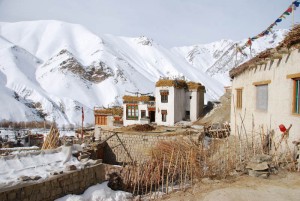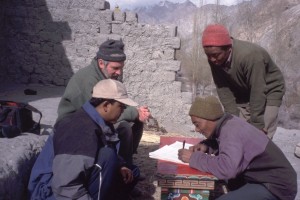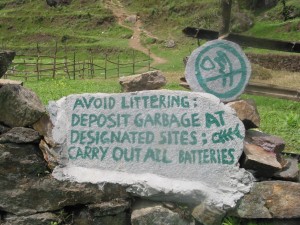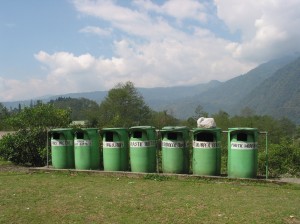
As responsible tourism principles spread globally, the “greening” of travel is becoming more mainstream. How can tour operators incorporate ecotourism products into their itineraries, especially if ecotourism is not already at the heart of their business planning and design?
According to AdventureEDU Educator Wendy Brewer Lama, who has 25 years experience as both an ecotourism development specialist and an operator, partnering with community-based ecotourism programs in destinations can generate highly marketable, added-value experiences for your clients.
“Ecotourism and sustainable community-based travel are in demand, and working with on-the ground groups can actually strengthen your product,” explains Lama. “It can be difficult to initially set up however, when you don’t have personal contact with in-country stakeholders. I’ve found the best ways to identify potential partners are 1) to ask fellow ecotour operators working in that area; 2) to research in-country ecotourism programs and affiliated NGOs online and seek out feedback about their projects and products; and 3) to travel to the destination and investigate for yourself.”
She explains that involving community partners in tourism development can help ensure that the social and environmental benefits of tourism will last. Local residents become stewards of the very resources or qualities that attract visitors — “tourism assets,” including the natural environment, wildlife and traditional cultures. Community participation at all levels, from destination planning to product development, impact management and benefit sharing, is key to achieving truly sustainable tourism, a win-win for all.

There can be challenges. Communities are not always organized in a manner that enables business partnerships with tour operators or destination managers. Community-based organizations (CBOs) are often limited in terms of staffing, technical expertise (much less internet access) and resources, and struggle to respond quickly enough to satisfy external inquiries. They often experience high staff turnover — as staff learn new skills, they seek better paying jobs outside the community — which can make long term planning and partnering challenging; and there is sometimes a political leaning or divisiveness in the organization that can preclude equitable opportunities for economic gain among members.
Additionally these organizations are sometimes created and run with a mind solely towards generating community benefits without a good understanding of market issues. In one instance, Lama had organized a two-night homestay for traveling students in a village that was well organized and experienced in hosting guests but whose priority was making sure that benefits were equally distributed among all participating homestays — a highly valued aspect of their community-based tourism program, but one that didn’t necessarily reflect the visitors’ best interests. They had set up a rotation system that required visitors to switch homes after just one night. That experience was not ideal for the travelers, who were just getting comfortable and bonding with their hosts, and desired less interruption to their stay. Lama was on hand and able to communicate the issue effectively to community leaders who were willing to be flexible and allow a longer stay with the original homestay. In the end, the rotation system remained a firm part of their program, and they learned a lesson about balancing market forces with supply-side interests.

“Just like other travel products, sustainable tourism stemming from partnerships within the community requires a lot of pre-trip as well as on-the-spot communication and adjustment. You really have to read the situation from beginning to delivery and be flexible and proactive,” says Lama. “Much responsibility lies with the trip manager and the success of the experience depends largely upon his or her relationships with local hosts.”
When selecting communities or local organizations with which to partner in sustainable tourism product development, Lama suggests getting referrals and feedback from other tour operators with first-hand experience, and interviewing community groups to identify areas of mutual interest and win-win opportunities. Both sides of the partnership must benefit: the tour operator gets a marketable tourism product and the community members gain a livelihood option that reinforces and actually subsidizes their taking care of the natural and cultural environment.
None of this comes easy, however, and it takes time. Community participation involves meetings with various local stakeholders, and seeking out ways to draw in marginalized groups such as women or ethnic minorities. If only the privileged members of a society benefit from tourism, others are unlikely to take proper care of the tourism assets. Once a promising and representative partnership organization is identified, some basic leadership, planning and management skills are needed, requiring an investment in capacity building. Taking members on a field trip to see how other communities run a sustainable tourism program often helps.

From the marketing perspective, itineraries that have a strong focus on meaningful cultural interaction and a “give back” element often attract the appropriate type of visitor. The tour operator’s responsibility is then to provide them with detailed and practical briefing material and assign a sensitive trip leader to help bridge the cultural and communication gaps.
“There are generally two types of such guests, often referred to as ‘ecotourists,’” she says. “One tends to be a little older and have more financial resources. The other is younger, and tends to have less money but is often well informed and well experienced as a traveler. They both can have a positive impact on community based tourism; for example, by working as a volunteer or traveling in a way that places interactions with the local community as a priority. Some even return to the destination to serve as longer term volunteers; others return home and send money or more guests, or just keep in contact with the community. They become ambassadors for the community, helping to build bridges to the outer world that can benefit a community in the future.”

In the end, the key elements to developing sustainable marketable community-based tourism are:
- Creating win-win-win partnerships between tour operators, NGOs/non-profits and community based organizations (CBOs)
- Building CBOs’ capacities to protect tourism assets, equitably share economic opportunities, and deliver value-added tourism experiences;
- Focusing marketing efforts on attracting visitors who will spend more time and/or more money in the community while improving the value of their experience with good information and interpretation, rather than aiming to increase the number of visitors;
- Further strengthening CBOs by helping them link up with other CBOs (e.g., developing a circuit of community-based tourism destinations or collaborating in marketing, training, peer-to-peer learning), with NGOs/non-profits (e.g., tapping into institutional development and networking opportunities), and with tour operators (in that increasing demand for community-based tourism products and services can help improve the quality and spur competition).

Two examples of successful three-way partnerships that support community-based sustainable tourism are described briefly below, followed by weblinks for more information about these and other sources of information on the topic.
- Kangchendzonga Conservation Committee (KCC), Sikkim, India: KCC is a CBO based in Yuksom, trekking trailhead to Kangchendzonga National Park, Sikkim. Established in the mid 1990s by local youth, it provides training to porters and educates visitors in responsible tourism, collects and recycles garbage (Zero Waste Himalaya), promotes use of non-wood fuels and biodiversity conservation actions, espouses participatory planning for sustainable livelihoods, and advocates state and national sustainable tourism policies and programs (e.g.,state-wide plastic bag ban). Its effectiveness is in part due to its long-term relationships with, among others:
- International non-governmental organizations (INGOs) including The Mountain Institute, Snow Leopard Conservancy-India Trust, UNDP, Singapore Management University, JICA;
- District and state level agencies throughout India, national park, wildlife and forestry departments of Sikkim and greater India;
- Other CBOs and local NGOs including Royal Society for the Protection of Nature, Mountain Spirit – Nepal, Ecotourism Development Committees of Sikkim;
- Private sector tourism organizations and operators including The Ecotourism Society, KarmaQuest Ecotourism and Adventure Travel, Himalayan Homestays, and trekking and tour operators and associations of Sikkim.
- Snow Leopard Conservancy-India Trust: SLC-IT evolved out of the US-based Snow Leopard Conservancy’s, The Mountain Institute’s, and UNESCO’s involvement in a snow leopard conservation and community-based ecotourism project in Ladakh, India in the late 1990s to mid-2000s. It provides a successful example of leveraging wildlife conservation actions through equitably shared benefits of homestay tourism. Once despised as livestock predators, the snow leopard is now protected by highland herders for bringing significant tourism revenue to remote mountain villages of Hemis National Park in Ladakh. Key partnership relationships and actions include:
- Jammu-Kashmir State Forest Department now restricts the number of tourists who can enter the national park to see snow leopards during winter, protecting the cats from disturbances as the popularity of snow leopard viewing tourism has grown;
- Leh-based and international tour operators donate equipment and funds for snow leopard research and conservation;
- CBOs and beneficiaries in the Park help monitor snow leopard movements, protect its prey species and manage livestock to minimize conflicts with snow leopard conservation.
- Village homestay operators place visitors in homes on a rotation basis to distribute income earning opportunities, regulate charges, maintain service standards and promote youth and women’s participation in nature and cultural conservation and small enterprise development.
ICIMOD Working Paper 2012/2 Mountain Biodiversity Conservation and Management(containing an article about both SLC-IT and KCC)
NGO shows the way in nature conservation (re: KCC)
The International Ecotourism Society
The Mountain Institute (Publications re: Community-Based Tourism for Conservation and Development)
Snow Leopard Conservancy-India Trust
Snow Leopard Conservation (US) – See India Program and Publications
Learn more about AdventureEDU: Education for the Business of Adventure Travel.
